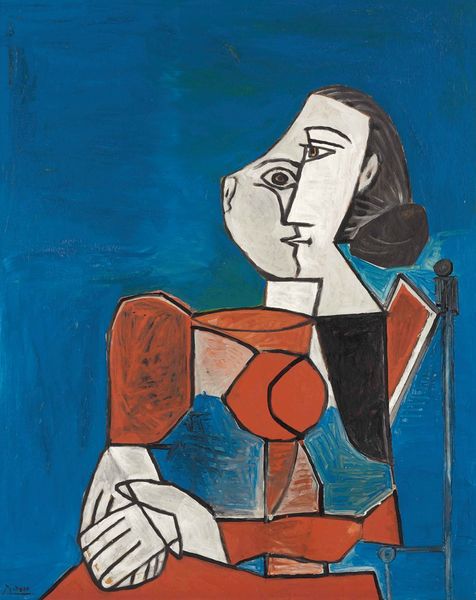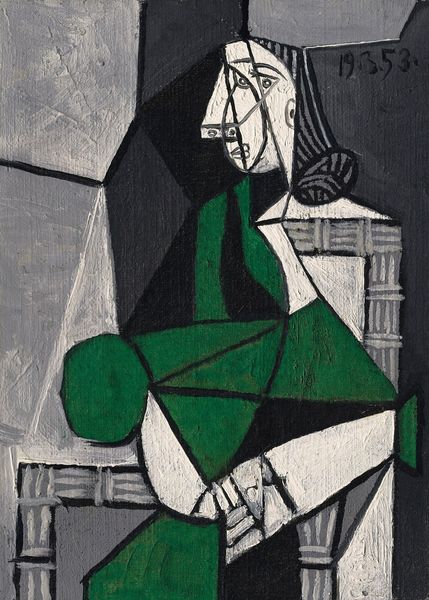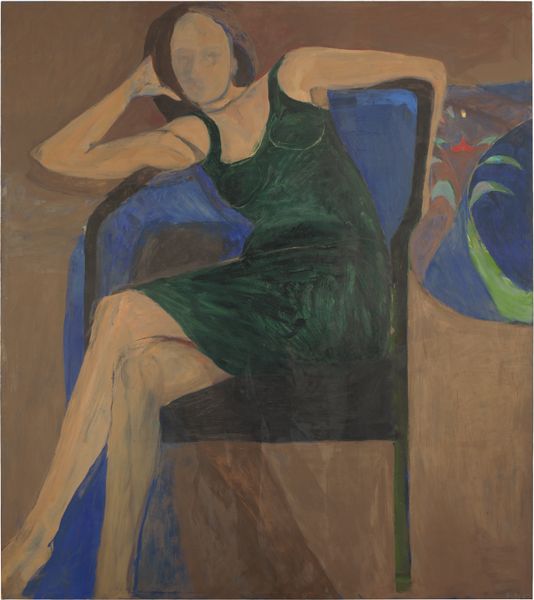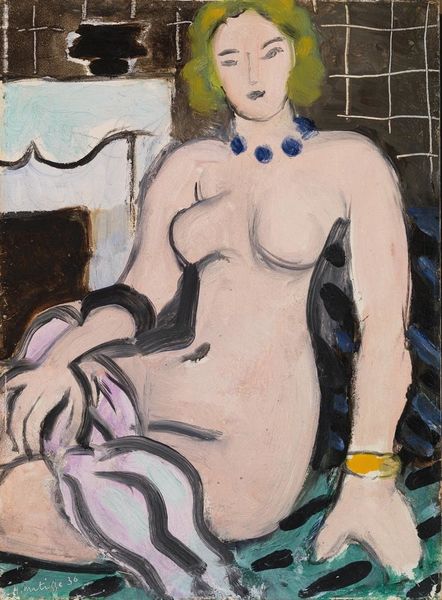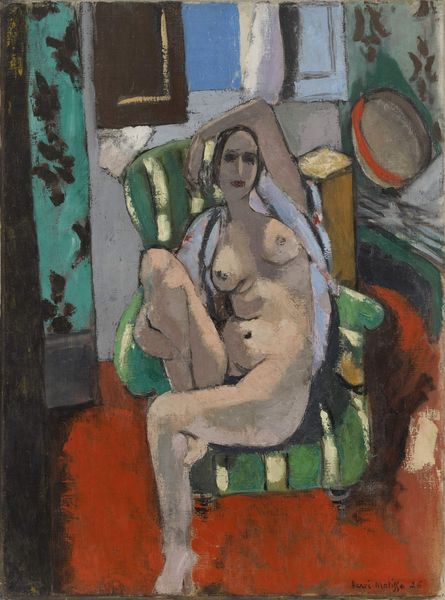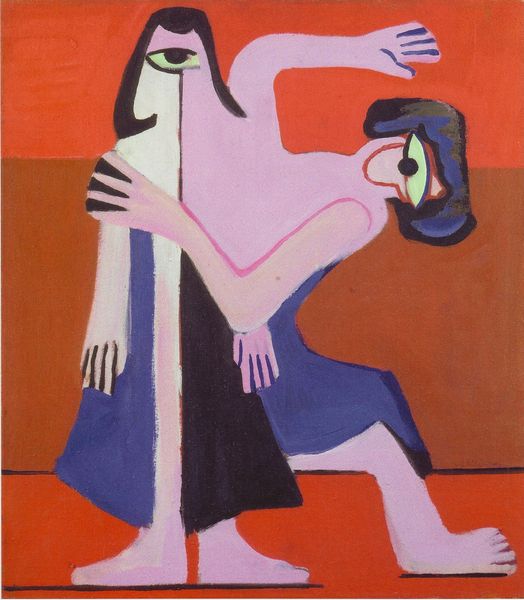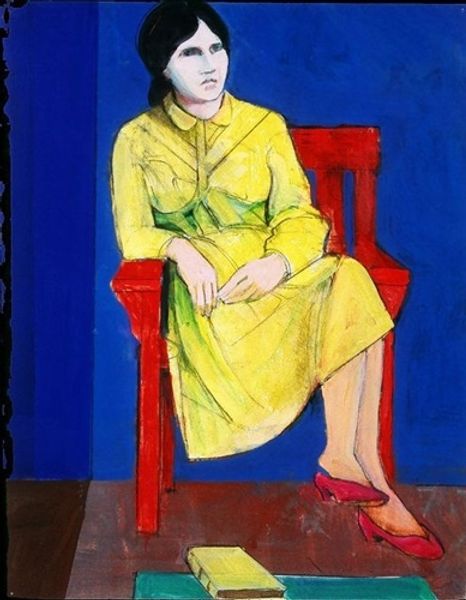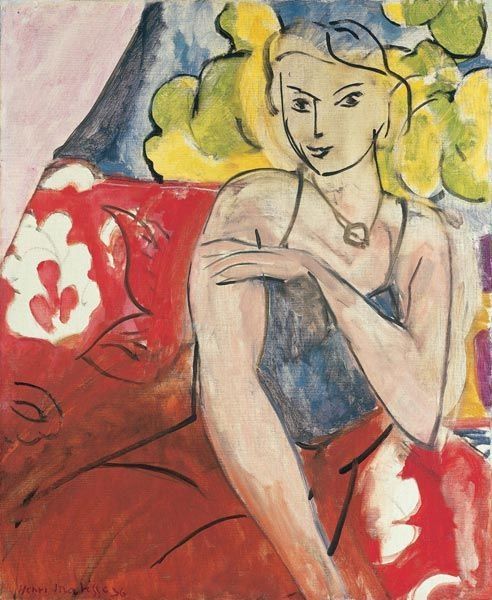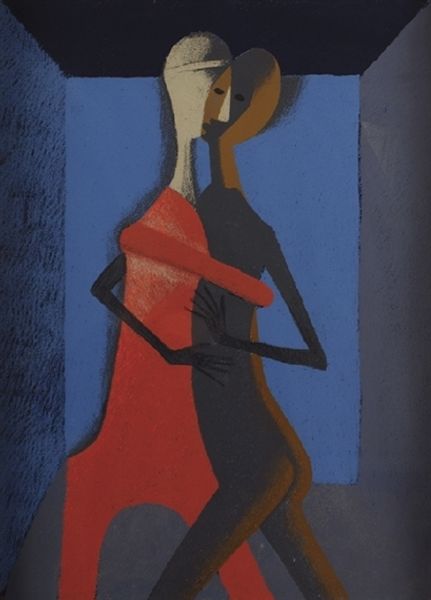
Copyright: Modern Artists: Artvee
Curator: Picasso’s "Femme assise près d’une fenêtre," created in 1932, shows us a seated woman rendered in oil paint with bold, flat planes of color. What’s your immediate take? Editor: Restrained yet emotionally charged. The angular shapes are jarring, yet the colors are strangely harmonious. I get a sense of melancholy solitude from her posture. Curator: That’s interesting, and fitting. This portrait is often seen through the lens of Picasso's personal life, specifically his relationship with Marie-Thérèse Walter. It captures her in a moment of quiet contemplation, but it's also infused with Picasso’s characteristic fragmentation of form, right? It presents a face, recognizably, yet it deconstructs how we actually perceive a face. Editor: Right. The deconstruction mirrors, perhaps, how their affair deconstructed his own marriage, or, perhaps, the deconstruction of familiar female roles in European societies at the time. But it is her gaze – her sightline beyond the picture's edge – that has been debated over the years by art historians and feminists alike. Does her glance indicate oppression, a hope to escape, imprisonment by the chair she inhabits and the rooms she haunts? Curator: Definitely. The window itself acts as a framing device that contributes to this feeling of entrapment, doesn't it? Even if, formally, it echoes and punctuates his movement away from strict adherence to the original tenets of Cubism by the 30's, while allowing him to experiment with a softer, Fauvist palette. We have to recall the volatile and increasingly public role for the artist within mass culture at the time; we mustn't forget this wider cultural perspective that includes a popular celebrity, and celebrity obsession, within an exploding art market. Editor: A crucial point. Her likeness then operates on several registers at once. In terms of cultural memory, it becomes another instance of the “suffering muse” trope within the modernist canon, albeit realized with striking geometric simplicity. It serves as an index to trace the personal history between artist and sitter and, inevitably, that wider picture about the shifting role of painting and the painter. Curator: Absolutely. Considering both the stylistic influences and personal narratives really enhances how we can engage with this powerful portrait. Editor: Agreed. Seeing those interconnected layers deepens its complexity, moving it beyond just an exercise in form and color. It has quite the long history!
Comments
No comments
Be the first to comment and join the conversation on the ultimate creative platform.
